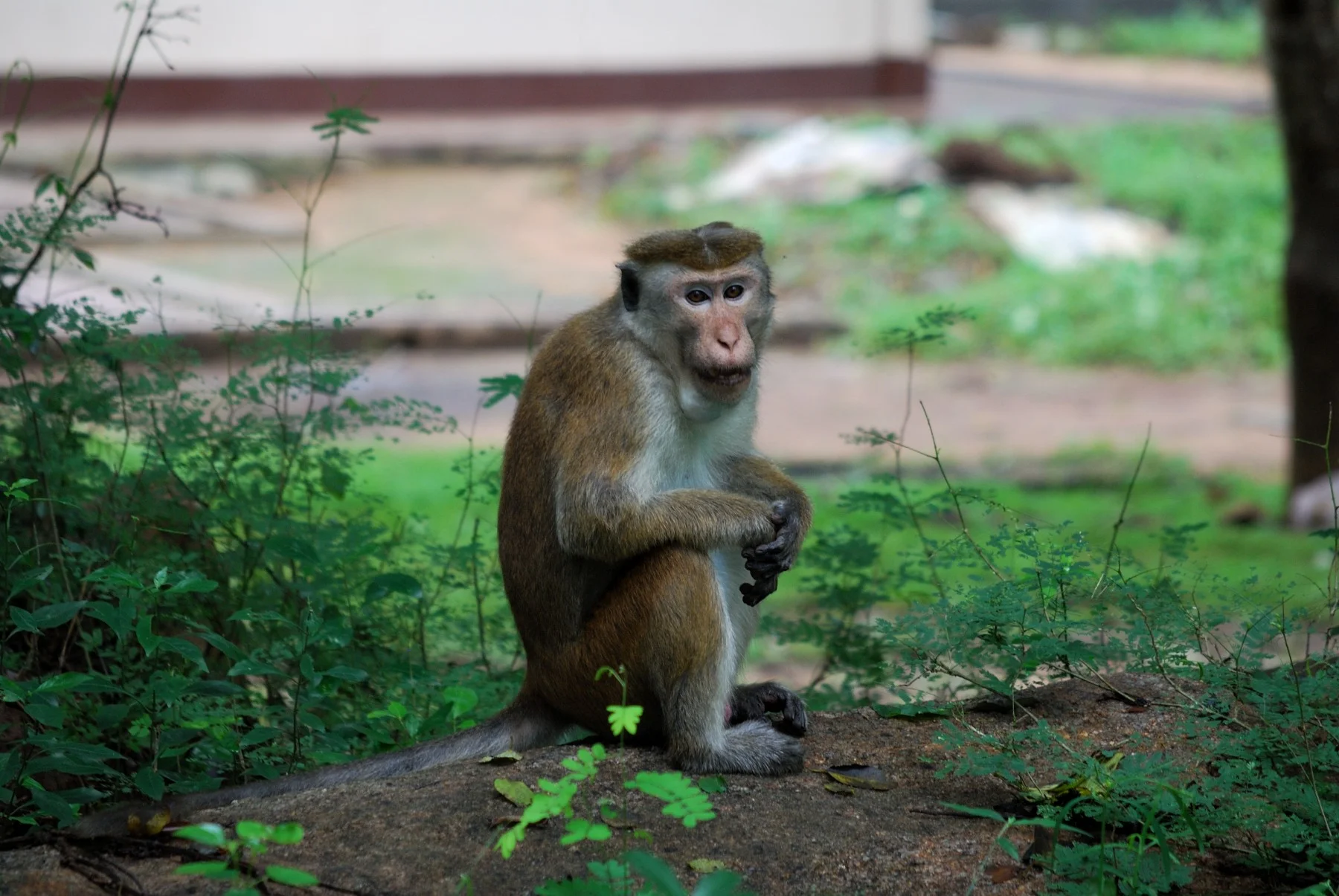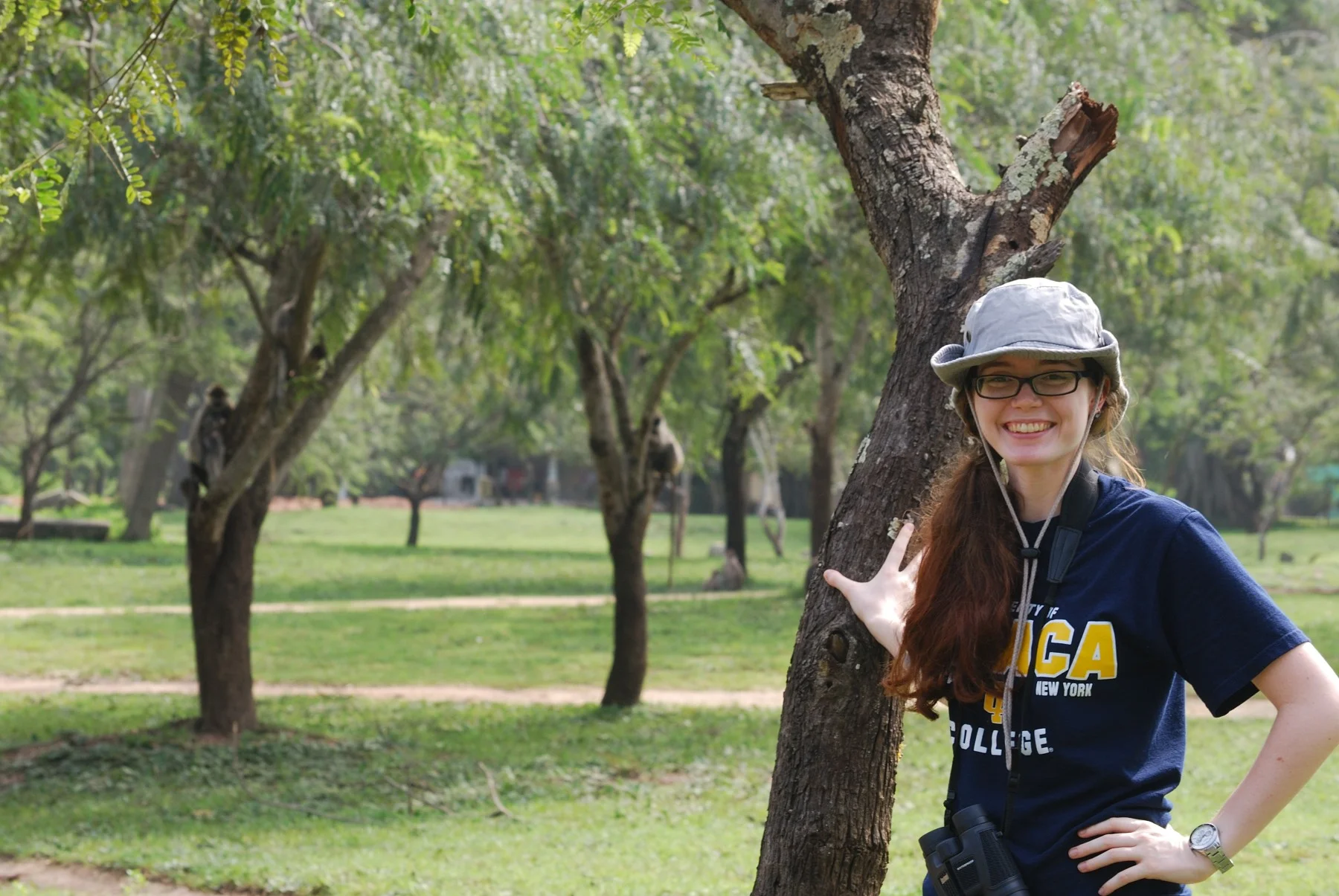Non-Human Primate Research
2020-PreseNt: Dissertation Research: Why do primates live in groups? A test using agent-based models
In trying to prevent the spread of COVID-19, quarantine and social distancing created a secondary worldwide health crisis of loneliness and stress. This is not surprising, since social connection is widely known to be vital for human health. In fact, all humans rely on each other for our most basic physical needs to the extent that we have been described as “ultrasocial”. Although sociality and cooperation have enabled humanity’s spread around the world and the development of complex civilization, our reliance on social interaction has also allowed diseases like COVID-19 to spread so explosively. This contradiction has led many researchers to puzzle over why humans and other animals evolved to live in groups in the first place, when it can have such devastating costs. Most species of our closest evolutionary relatives, the primates, live in pairs or groups, and social connectedness affects their wellbeing and longevity similarly to how it does for humans. However, primates frequently come into conflict with their group members over access to food. These “food fights” are assumed to have large effects on reproduction and survival, because food is a key determinant of how many offspring a female can produce in her lifetime. As a result, fighting over food is thought to either prevent groups from forming or greatly limit group size. Essentially, we would always expect females to avoid surrounding themselves with more mouths to feed and winding up with a smaller piece of the pie. This is a foundational assumption that behavioral ecologists have left largely untested for decades.
However, it is not known whether group-living inevitably reduces individuals’ food intake. In fact, the type of habitat that a primate lives in and the food they eat might have a large effect on whether there is a net benefit or net cost to group-living. Many have postulated that resources which are grouped together in space (rather than spread evenly across the landscape) contributed to the evolution of group-living. Others have postulated that multiple characteristics of food resources - spacing, density of calories on the landscape, how quickly the food can be consumed - interact to constrain group size. Thus, the ecology of the habitat and the particular resources that a species depends on for food are expected to impact group-living, but the particular factors that may drive or prevent group-living remain unclear. Individual field studies of primates are of limited value in answering this question, because multiple factors are always acting at once, making individual effects difficult to disentangle. In addition, real animals are always dynamically reacting to an environment they have likely adapted to over millennia.
To overcome these difficulties, I use computer simulations to artificially manipulate these variables so that I can isolate the effects of each one. The approach is called agent-based modeling, wherein we build a program superficially similar to a video game. I create a virtual landscape and virtual primates (i.e., “agents”) who run around looking for food. The virtual primates are given rules for how to search for food and how to interact with each other, to try to make their behavior represent the way primates act in the real world. Once the virtual primates are acting realistically enough, I can alter the virtual landscape or aspects of the agents’ behavior to observe the outcomes.
Using this approach, which is still rarely applied to primates, I am able to shed new light on how and why primates live in groups. To address this problem, I am conducting three studies with three complementary research questions. First, I have investigated how resource distribution affects the dominance relationships and distribution of resources within a group. This study also investigated how primates make decisions about starting “food fights” (i.e., assessment strategy), which impacted some design choices for models for the second and third research questions. Second, I am investigating how social behavior might impose costs through feeding competition, and how these costs might be mediated by different resource characteristics. Third, I am investigating how living in a larger group might increase feeding competition, and how these costs might be mediated by different resource characteristics or through behavioral responses.
2017-2020: KaludiyaPokuna Primate Conservation & Research Project
I worked with Drs Amy Lu, Roberta Salmi, and Rajnish Vandercone to establish the Kaludiyapokuna Primate Conservation and Research Project near Dambulla, Sri Lanka. This is a field site aimed at studying tufted gray langurs (Semnopithecus priam) and purple-face langurs (Semnopithecus vetulus), with special attention to the feeding ecology, vocal communication, and endocrinology of these primates.
In early 2018, I collected the samples and data, and performed preliminary analyses on the samples for Amato et al. 2020, “Gut microbiome, diet, and conservation of endangered langurs in Sri Lanka.” Biotropica.
I originally proposed a dissertation project to be conducted at this field site. This project, titled “Inequalities in the Reproductive-Immune Trade-Off in Tufted Gray Langurs,” was awarded funding from the Wenner Gren Foundation ($19,710), the Sigma Xi Society ($1,000), and the Animal Behavior Society ($2,000).
Because of sampling issues and COVID-19, I left this project in 2020.
2014-2021: Female kin bias during takeover in hamadryas baboons
After graduating Ithaca College, I began a collaboration with Dr. Larissa Swedell at Queen’s College. Dr. Swedell studies hamadryas baboons, a species with a unique social structure and mating system. Not only are small groups (called one male units) nested hierarchically inside larger social groupings, but males control female group membership by coercing them to follow. It’s therefore puzzling that females within units are actually quite closely related genetically. Dr. Swedell and I therefore wanted to test how females within units could be closely related despite male coercion. Starting with the pre-existing toque macaque simulation framework, I constructed a complex agent-based model for hamadryas baboons, as well as an algorithm for calculating pedigree relatedness using the simulated data. This model included the hamadryas baboon’s multilevel social structure, its complex social dispersal system, and real life-history data. As you can see in the diagram, relevant states and pathways were numerous and very challenging to work out conceptually and then program into a working simulation. We found that despite male coercion, female behavior causes kin reunion and greater within-unit relatedness, but the social structure does also restrict gene flow. The results of this research were published in 2021 in Animal Behaviour, and were presented twice (April 2016: Marcy S Ekanayake-Weber and Larissa Swedell. “Female power in a male-dominated society: Simulating how female kin reunite in hamadryas baboons," American Association of Physical Anthropologists meeting, Atlanta, GA (published abstract, American Journal of Physical Anthropology 159: S62, p 137); Nov 2016: Marcy S Ekanayake-Weber and Larissa Swedell. “Modelling female kin reunion in hamadryas baboons,” North-Eastern Evolutionary Primatologists meeting, New York, NY).
2016: Male reproductive skew and lifetime reproductive success in baboons: An agent-based model
Gelada male (third from the left) and three females. Image credit here.
Primate males are known to vary widely in how many reproductive opportunities they get at any one time (i.e., reproductive skew), but it’s hard to measure how much they reproduce over a whole lifetime (i.e., lifetime reproductive success). Hamadryas baboons have very high skew, in which a leader male gets all of the matings in his unit, but in other baboon species, skew is much lower - but what about lifetime reproductive success? Building off of my collaboration with Dr. Larissa Swedell, I worked with Dr. Amy Lu to expand the hamadryas baboon simulation to also model yellow baboons using published data, primarily from the long-term Amboseli site. I then compared the simulated variance in male lifetime reproductive success, and did find that higher reproductive skew does not always produce higher variance in reproductive success.
2013-2014: Modeling Primate Social Networks and Capture Practices
Toque macaque on Rajarata University campus in Sri Lanka
Toque macaques (Macaca sinica) experience a lot of conflict with humans, and in 2013, there was an extensive capture-and-release program put into effect to try to limit their urban population size and reduce human-monkey conflict. This was the inspiration for my senior honors thesis, “Primate Pests: Simulating the Social Network, Population Demography, and Translocation of an Endemic Sri Lankan Monkey.” For this project I had a undergraduate student collaborator, Adeesha Ekanayake (Computer Science, Ithaca College), who helped me program the titular simulation, as well as faculty supervisors Dr. Jen Muller (Anthropology, Ithaca College) and Dr. Leann Kanda (Biology, Ithaca College). Together, Adeesha and I created an agent-based simulation with demographic and social-network attributes based on toque macaques. We first developed the simulation framework until it was life-like and stable-enough over time to actually use for hypothesis testing. We then tested how the simulated populations were effected by “pest control” capture and release on our simulation toque macaque populations. We found that while translocation might cause population collapse where monkeys are captured, it will almost inevitably cause population explosion where they are released. Moreover, the social network effects appear to be highly unpredictable, based on our simulations. In addition to my honors defense, some of the results were presented at the 2014 AAPA (April 2014: Marcy S Weber and Adeesha Ekanayake. “Simulating the social network and population dynamics of an endemic Sri Lankan macaque,” Undergraduate Research Symposium, American Association of Physical Anthropologists meeting, Calgary, AB Canada).
Tufted gray langurs near the Bodhi tree in Anuradhapura, Sri Lanka
Wi 2012-2013: Religion and Primates in Sri Lanka
Me in Anuradhapura with the langurs
As an early undergraduate at Ithaca College, I undertook a small independent study project on gray langurs (Semnopithecus priam) in Sri Lanka. This project involved a collaboration with Dr. Rajnish Vandercone at Rajarata University, which is also where some of the observations took place. I conducted scan and ad libitum sampling of three groups of langurs at varying levels of human interaction and differing sociocultural contexts: a university campus (Rajarata University), a forest fragment near a temple site (Kaludiyapokuna in Mihintale), and a very popular high-tourist temple site (Anuradhapura). I found that, as expected, food aggression was very high in the university and Anuradhapura langurs, as both groups appeared to have easy access to human foods via offerings, theft, and trash.






